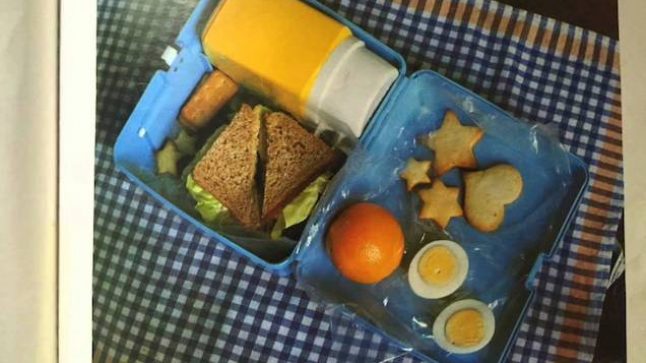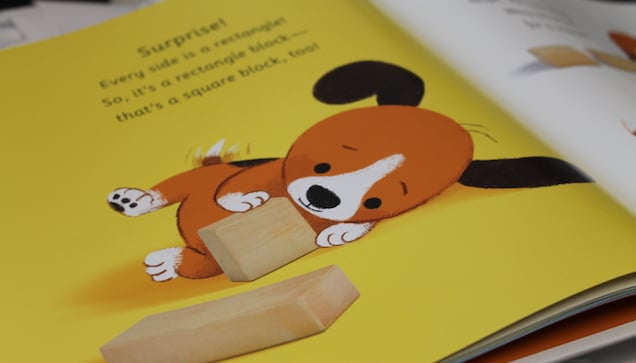Serie: Book Ideas
Diferentes tipos de formas y no-ejemplos para estimular el aprendizaje geométrico

Children explore the everyday shapes in their environment from birth. They informally learn about the properties of 3D shapes as they mouth, touch, and play with blocks, balls, and other objects in daily life. Long before children have language to name or describe these different types of shapes, they develop intuition about which shapes roll, how a flat surface feels, and that “corners” are pointy.
Aunque vivimos en un mundo tridimensional, el lenguaje y los materiales utilizados habitualmente para enseñar a niñas y niños se centran en las formas 2D. De hecho, la mayor parte del énfasis se pone en sólo cuatro formas: círculos, triángulos, rectángulos y cuadrados. Estas formas suelen presentarse de una manera típica, de modo que niñas y niños suelen desarrollar nociones rígidas y fijas de cómo deben ser las formas.
So it’s up to us to find, share, and talk about a variety of shapes with children in ways that expand their understanding and build connections between shapes (think, how is a square a special case of a rectangle?) and connections between the shapes drawn on paper and the concrete objects in our world.
Take triangles for example. Most children’s books present triangles as equilateral (3 equal sides) and oriented to sit on a horizontal base. As a result, children may not recognize isosceles and scalene triangles as triangles because they look “stretched out.” Children may say that a triangle with a vertex pointing down is “upside down.” Watch a small group discussion about “upside down” triangles during a preschool activity called Sentir las formas.
 Talking about diverse shape examples along with nonexamples can go a long way to help children understand what defines a shape—what makes a triangle a triangle, for example. Nonexamples are highly visually similar to a type of shape but lack at least one defining attribute.
Talking about diverse shape examples along with nonexamples can go a long way to help children understand what defines a shape—what makes a triangle a triangle, for example. Nonexamples are highly visually similar to a type of shape but lack at least one defining attribute.
Luckily, it’s easy to find nonexamples to discuss in everyday life. How often might we point to a piece of pizza and call it a “triangle?” As adults, it’s not our main concern to correct children’s language, but to listen to what shape knowledge children reveal by what they say and to build on it. So, if a child says a pizza slice is a triangle, you might ask them why they think that. Likely, the child will have noticed that the slice has three sides. This is a great opportunity to focus on the defining attributes of a triangle. For example, you might say, “Yes, I see three sides, but the crust side is curved so it’s not exactly a triangle. Triangles have three straight sides.”
Going on a “Shape Hunt” in real life or through picture books such as Shapes, Shapes, Shapes by Tana Hoban is bound to turn up many common 3D objects that get labeled with 2D shape names. This is a great opportunity to help children see the relationship between different types of shapes, particularly 2D and 3D shapes. For example, many children will say that a ball is a “circle” because it is round. You can acknowledge what the child knows while pushing for greater precision—“Yes, the ball is round like a circle, but it’s not flat. A ball is round in every direction so we call its shape a sphere.” The book ¿Y ahora qué? Un cuento de matemáticas by Robie H. Harris tells the story of Puppy putting together blocks to build a bed that’s just the right size for a nap. As Puppy solves problems, readers get to explore how 2D shapes are the flat faces of 3D prisms and share in the delight of discovering “a rectangle block—that’s a square block, too!”
Most of the world around us is not made of regular 2D shapes the way they are drawn in simple shape books and posters. And that’s okay. What a wonderful opportunity to start a conversation with children about different types of shapes and the attributes of shapes!
¡Sorpresa!
Cada lado es un rectángulo.
So, it’s a rectangle block —
that’s a square block, too!
